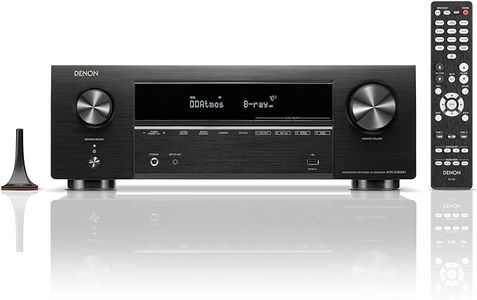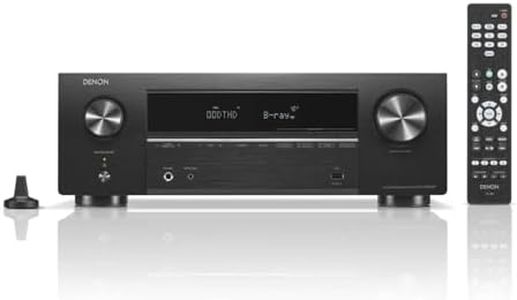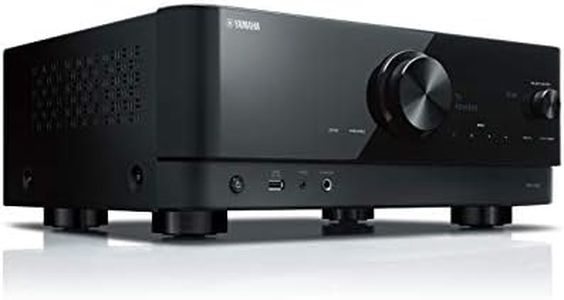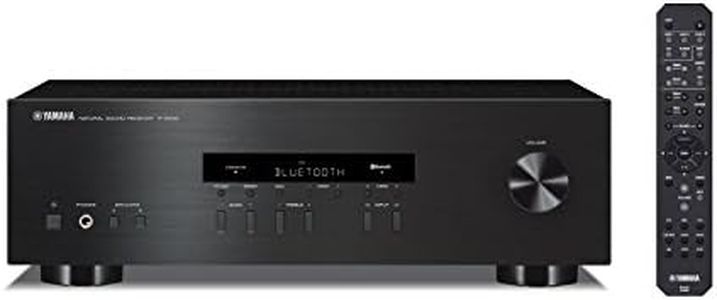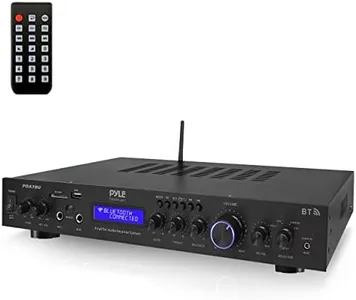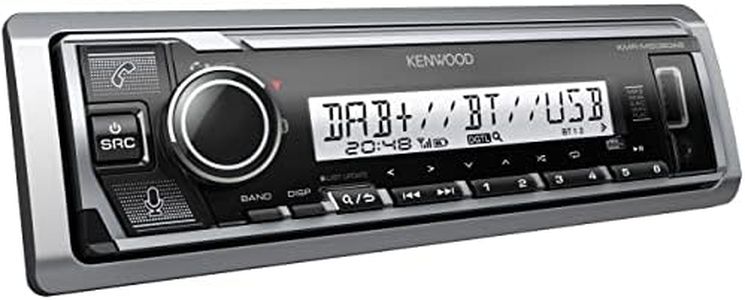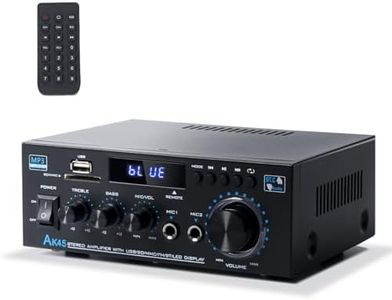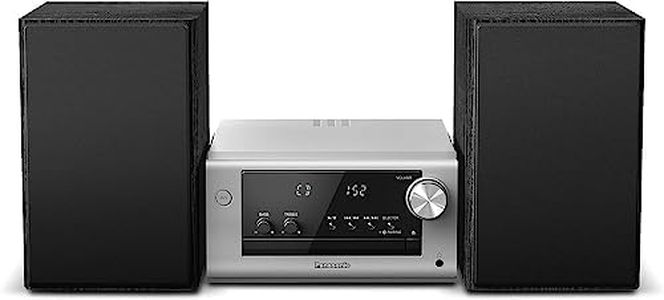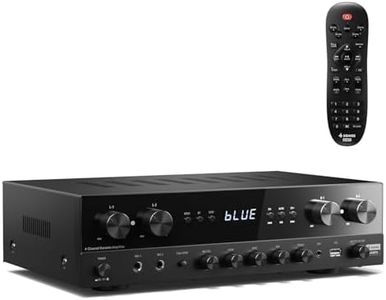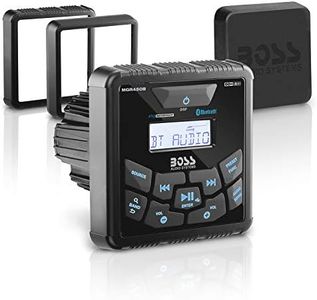We Use CookiesWe use cookies to enhance the security, performance,
functionality and for analytical and promotional activities. By continuing to browse this site you
are agreeing to our privacy policy
10 Best Am Fm Stereo Receivers
From leading brands and best sellers available on the web.Buying Guide for the Best Am Fm Stereo Receivers
Choosing the right AM-FM stereo receiver can greatly enhance your listening experience, whether you enjoy radio broadcasts, music, or talk shows. The key is to understand which features and specifications will best meet your needs and how they affect performance. Consider where and how often you’ll use the receiver, the sources you want to connect, and the kind of sound quality that matters most to you. By focusing on the main specs, you can find a receiver that delivers both enjoyment and reliability for years to come.Tuner SensitivityTuner sensitivity tells you how well the receiver can pick up weak radio stations. This is important if you live in an area with lots of distant or low-power stations you’d like to listen to. Tuner sensitivity is usually measured in microvolts (µV), with lower numbers indicating better sensitivity. High sensitivity (lower values) means better performance for rural or fringe areas, while in cities with strong signals, average sensitivity is usually good enough. Choose higher sensitivity if you often struggle with static or weak stations.
SelectivitySelectivity measures how well the receiver can distinguish between closely spaced stations. This matters if you’re in an area where many stations are near each other on the dial, which can cause interference or overlapping channels. Selectivity is expressed in decibels (dB); higher values mean better ability to separate stations. If you notice overlapping stations where you live, a receiver with high selectivity is important; in areas with fewer stations, this spec is less critical.
Power OutputPower output refers to how much audio power the receiver can send to your speakers, usually rated in watts per channel (WPC). This affects how loud your system can play without distortion. For small rooms or casual listening, lower power is often enough; for larger spaces or for people who like to turn up the volume, higher power output will provide clearer, stronger sound. Consider your room size and listening habits to choose the right level.
Number of Inputs and OutputsInputs and outputs determine what other audio sources or equipment you can connect, like CD players, MP3 players, record players, or external speakers. More inputs give you flexibility to expand your system. Think about what devices you use now and what you might add in the future—a receiver with enough connections for all your needs will save you hassle.
AM/FM Preset MemoryPreset memory lets you save your favorite radio stations for easy access. The more presets, the more stations you can store and quickly switch between. If you often listen to many stations or share your receiver with others, more presets can be very convenient; if you only listen to a handful, a basic amount will suffice.
Display and ControlsThe quality and type of display (such as LED, LCD) and the layout of the controls can make using your receiver much easier. Clear displays help you see station info and settings, while logical controls make tuning and adjusting simple. If you prefer ease of use, consider models with larger, well-lit displays and straightforward buttons or knobs.
Sound Quality FeaturesSome receivers come with extra sound enhancements, like equalizers, bass/treble adjustment, or surround modes. These features let you customize audio for your taste or room. If you enjoy fine-tuning your sound or want the best listening experience, look for these options. If you’re a casual listener, basic tone controls may be all you need.
Build Quality and SizeThe materials and construction influence both how long your receiver will last and how it looks in your space. Heavier, solidly built receivers tend to last longer, but make sure the size fits your shelf or entertainment center. If you need a portable or compact setup, look for lightweight, smaller receivers.
